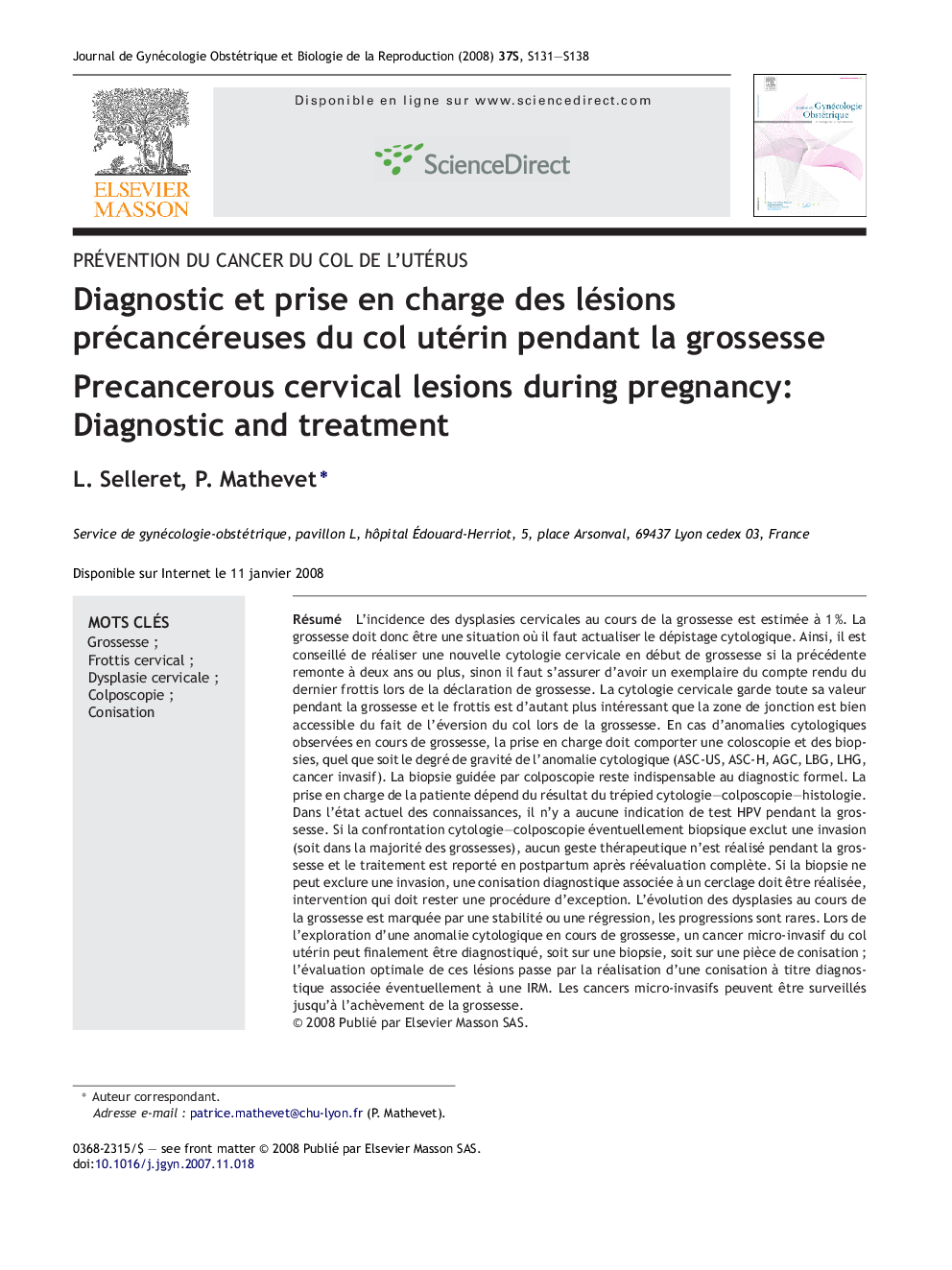| Article ID | Journal | Published Year | Pages | File Type |
|---|---|---|---|---|
| 3273405 | Journal de Gynécologie Obstétrique et Biologie de la Reproduction | 2008 | 8 Pages |
Abstract
The rate of CIN discovered during pregnancy is around 1%. Pregnancy should be a period for the checking of pap-smear. So a pap-smear should be performed if the last one is more than two years old. If the pap-smear is less than two years old, a copy of its result should be obtained. The cervical cytology is valid during pregnancy, and usually pregnancy induced an opening of the junction zone that helps to have a good evaluation of the cervix. When atypical cells are found in the pap-smear performed during pregnancy, the management should include a colposcopy and biopsies, whatever the severity of the abnormal cells (ASC-US, ASC-H, AGC, LBG, LHG, invasive carcinoma). The biopsy should be guided by the colposcopy. Biopsy is required for an optimal diagnosis. The management of the pregnant patient should be based on the results of cytology, and colposcopy and biopsies. Currently there is no indication for HPV-typing during pregnancy. If an invasive tumor is excluded after cytology, and colposcopy and biopsy, no treatment is performed during pregnancy, and the treatment is postponed after delivery following a complete cervical reevaluation. If an invasion cannot be excluded with the biopsy; a diagnostic conization completed with a cerclage should be performed. This procedure should be exceptionally performed. During pregnancy, CIN lesions are usually stable or regress; progression of CIN is rare. When managing an abnormal pap-smear during pregnancy, a microinvasive cervical cancer may be found on a biopsy or conization specimen. Staging of these lesions requires always a conization and eventually a pelvic MRI. Microinvasive cervical cancers can be only followed until the end of the pregnancy.
Related Topics
Health Sciences
Medicine and Dentistry
Endocrinology, Diabetes and Metabolism
Authors
L. Selleret, P. Mathevet,
